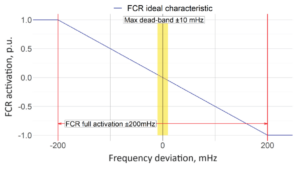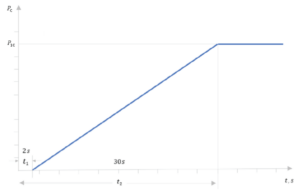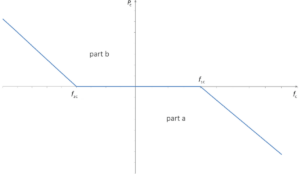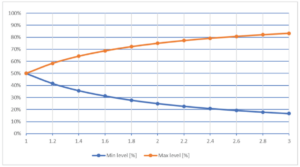Compatibility Analysis of Frequency Containment Reserve and Load Frequency Control Functions
Introduction
The intersection of Energy Engineering and Control Engineering plays a critical role in maintaining the stability and reliability of Electric Power Systems (EPSs). In today’s energy landscape, desynchronization and island mode operations present unique challenges for power grids. The study titled “Compatibility Analysis of Frequency Containment Reserve and Load Frequency Control Functions” explores these challenges and provides actionable solutions.
This blog delves into the key insights from the study, offering an in-depth analysis of its implications for Energy Engineering and Control Engineering.
The Core Concepts: Frequency Containment Reserve and Load Frequency Control
Frequency Containment Reserve (FCR)
FCR ensures real-time balance between power generation and consumption. It stabilizes the system frequency following disturbances and is vital for operational reliability within a synchronous area.
 Figure 1: Static frequency deviation/FCR activation example curves.
Figure 1: Static frequency deviation/FCR activation example curves.
Load Frequency Control (LFC)
LFC maintains frequency stability by adjusting active power. It prevents Under Frequency Load Shedding (UFLS) during desynchronization events and contributes to the seamless synchronization of isolated EPSs with larger grids like Continental Europe (CE).
These two functions form the backbone of modern EPS operations, bridging critical gaps in Energy Engineering and Control Engineering.
 Figure 2: FCR activation curve.
Figure 2: FCR activation curve.
Methodology and Key Findings
The study employed numerical simulations to evaluate the behavior of isolated EPSs. It focused on:
- Stability during Island Mode Operations: Ensuring uninterrupted power supply by maintaining an adequate active power reserve.
- Synchronization with CE: Developing a framework to facilitate smooth reconnection with the synchronous area.
- Prequalification Procedures: Establishing technical requirements for FCR and LFC units, ensuring their capability to withstand disturbances and contribute to system stability.
Results
- Enhanced Stability: Properly prequalified units ensured stable EPS operation during disturbances.
- Improved Coordination: Harmonized technical requirements fostered better cooperation between EPS blocks.
- Optimized Performance: Advanced simulations identified optimal strategies for maintaining grid stability and efficiency.
Technical Requirements for FCR and LFC Units
- Voltage Range Compliance: Units must operate within specified voltage ranges (see Tables 2 and 3 in the referenced study).
- Frequency Deviation Handling: Units should respond effectively to deviations up to ±200 mHz.
- Dynamic Voltage Support: Units must sustain operation during transient disturbances and recover pre-disturbance conditions quickly.
- Proportional Activation: Activation must align with frequency deviations, ensuring linear or faster response times.
 Figure 3: Frequency support in case of large over/under-frequency transients.
Figure 3: Frequency support in case of large over/under-frequency transients.
These requirements are central to the evolving landscape of Energy Engineering and Control Engineering, providing a robust framework for power system resilience.
Challenges and Solutions in Energy and Control Engineering
Challenges
- Desynchronization Risks: Loss of active power reserves can trigger instability in isolated EPSs.
- Complex Prequalification Procedures: Ensuring compliance with technical standards requires meticulous evaluation.
- Dynamic System Variables: Real-world factors like weather and load fluctuations complicate system stability.
Solutions
- Advanced Simulations: Leveraging numerical models to predict and mitigate risks.
- Integrated ERM Strategies: Utilizing Energy Reservoir Management (ERM) to optimize resource utilization.
- Collaborative Frameworks: Aligning national and regional standards to enhance interoperability.
Future Directions for Energy Engineering and Control Engineering
The study identifies several areas for further exploration:
- Real-Time Monitoring: Integrating IoT and AI technologies to enhance system responsiveness.
- Expanded Scenarios: Evaluating diverse conditions, including extreme weather and unexpected load variations.
- Industry Collaboration: Partnering with stakeholders to validate findings through real-world applications.
These advancements promise to elevate Energy Engineering and Control Engineering to new heights, addressing emerging challenges with innovative solutions.
 Figure 4: Management of the energy reservoir of an FCR-providing unit with LER.
Figure 4: Management of the energy reservoir of an FCR-providing unit with LER.
Conclusion
The compatibility analysis of FCR and LFC functions marks a significant milestone in Energy Engineering and Control Engineering. By addressing key challenges and proposing actionable strategies, the study sets the stage for a more stable and resilient power grid.
As the energy sector evolves, these insights will continue to shape the future of power system management. The emphasis on keywords like “Energy Engineering and Control Engineering” underscores the importance of interdisciplinary collaboration in achieving sustainable and efficient energy solutions.
